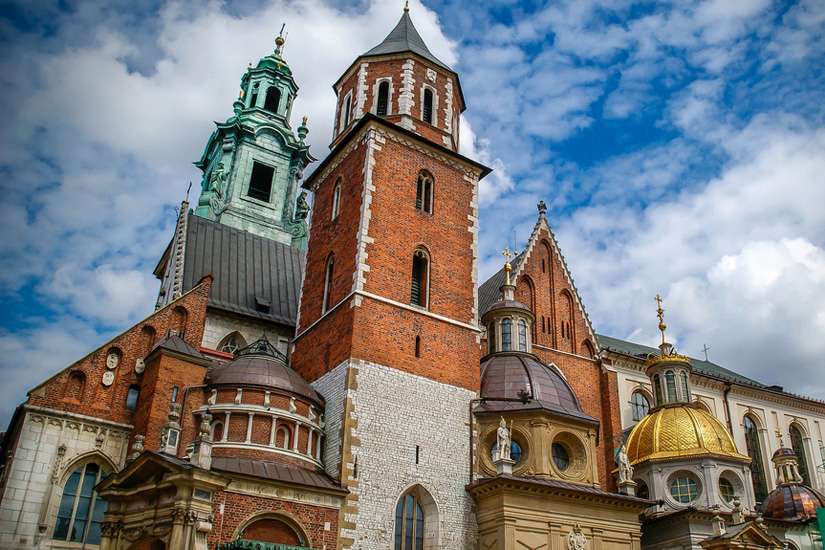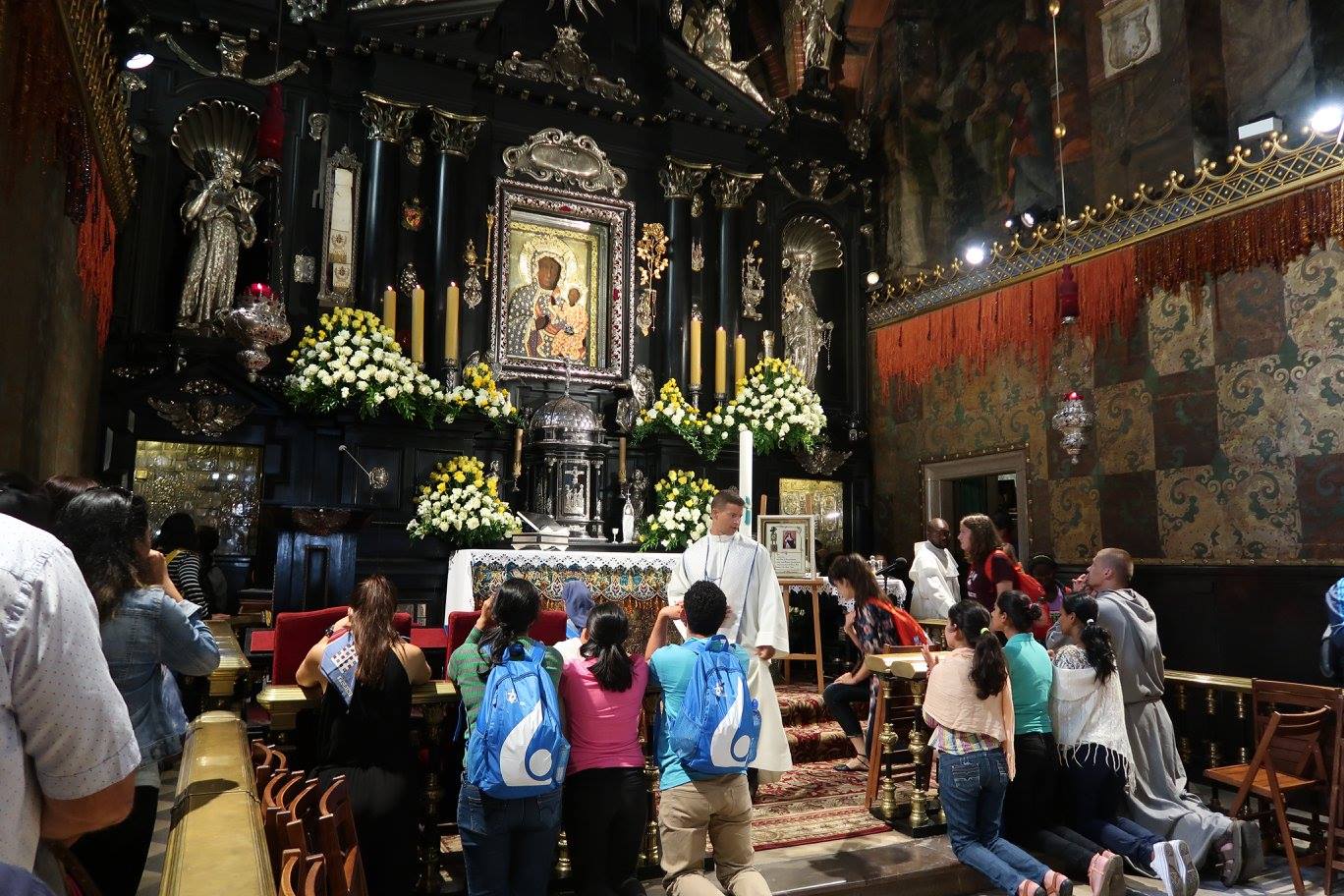From July 26-31, streets will be lined with ribbons of red, blue and yellow — the colours of the event’s theme. Flags from every nation are waving in the air. Crowds of young people around every corner, chanting in every language.
It’s easy to see why Pope Francis chose Krakow to host the huge youth event. The week’s theme comes from a passage in the Beatitudes in Matthew 5:7, “Blessed are the merciful, for they shall obtain mercy.” In the midst of the Jubilee Year of Mercy, Pope Francis is drawing the Church’s attention to a city known as the world capital of Divine Mercy.
“Krakow, the city of St. John Paul II and St. Faustina Kowalska, is waiting for us with open arms and hearts,” the Pope said after kicking off WYD registrations in July last year. “I believe that Divine Providence led us to the decision to celebrate the Youth Jubilee in that city which was home to those two great apostles of mercy in our times.”
Krakow is indeed a city of saints. Many Catholics have been inspired by Polish saints like St. Maximilian Kolbe, St. Teresa Benedicta (Edith Stein) and about 30 others. These saints were formed at an early age by a culture that is intrinsically connected to the Christian faith.
Poland is rich with Christian tradition, and 92 per cent of Poles profess the Catholic faith. On July 28, Pope Francis will celebrate Mass at Jasna Gora Monastery in Czestochowa to mark the 1,050th anniversary of the baptism of Poland. The baptism of Polish head of state Duke Miescszko I in 966 was a defining moment that rooted the country with ecumenical freedom and has become a hallmark of its Church.
Richard Sokoloski, director of the Slavic Research Group at the University of Ottawa and president of the Polish Institute of Arts and Sciences in Canada, said Poland’s baptism was just the beginning. Throughout its history, the Church has played an integral role in forming its society.
“The Catholic Church has very often been a voice of opposition when there was no official form of opposition,” he said. “Of course when you read about the period of the partitions, when Poland was swallowed up by its neighbours in 1795 to 1918, it was the Church that was the political voice when there was no political voice.”
The Church was also a leading force for Polish nationalism against Nazi domination during the Second World War. As a result, the Nazis often targeted clergy and consecrated religious for their public resistance and their cultural importance.
Sokoloski said the Church was “extremely important” during the fall of communism in the 1970s and 1980s, when Poland forged a new path for itself and the Church resisted the communist regime.
Sokoloski said no one had a greater impact than did Cardinal Karol Wojtyla, the sainted Pope John Paul II. As archbishop of Krakow, he preached Christian humanism and worked to undermine the Marxist philosophy of communism. When he was chosen the 264th Vicar of Christ in 1978, Wojtyla used his international platform to encourage other leading Church authorities.
“The cult of John Paul II is very strong and for good reason,” said Sokoloski. “His presence is extremely strong (in Poland)... certainly among the older generation, but among young people as well with whom he was extremely popular.”
Krakow is often considered “the second Rome” for its remarkable number of churches and monastic congregations.
Wawel Cathedral is a stunning 11th-century monument that towers over the city. Many who venerate St. John Paul II know the cathedral as a home of his spiritual milestones — his first Mass as a priest, his ordination as bishop, archbishop and cardinal.
St. Mary’s Basilica is the centrepiece of the city in many ways, located in the Main Market Square.
In the small district of Lagiewniki sits the original image of Divine Mercy painted by Eugeniusz Kazimirowski in 1934, as described by St. Maria Faustina Kowalska.
Jasna Gora Monastery, about two hours north of the city, is considered the spiritual capital of the country and houses the miraculous image of the Black Madonna of Czestochowa.
An hour west of Krakow is the town of Oswiecim where St. Maximilian Kolbe, Edith Stein and many others were executed by the Nazis in the Auschwitz-Birkeneau concentration camp.
London Auxiliary Bishop Joseph Dabrowski said that showing pilgrims the history and heritage of his homeland will definitely be the highlight of his trip to WYD. He wants to show the young people of his southwestern Ontario diocese the culture he grew up in.
Dabrowski returns to his homeland every few years to visit his family. He is amazed the churches are always full.
“The churches in Poland are rooted in faith and traditions. There are a lot of different devotions there that we don’t have (in Canada),” said Dabrowski. “For example, on Aug. 15 about 100,000 young people walk to the Black Madonna every year.”
Catholic devotion in Poland is incredibly strong compared to the rest of Europe. However, the Polish Church is concerned by the gap growing between the young people and the older generation. Data from the Central Statistical Office released last year suggests that the lowest numbers of people who believe in God are Poles in the 25-34 years age group, followed by those 16-24.
Fr. Slawomir Zareba from Cardinal Stefan Wyszynski University in Warsaw says the study merely shows a slow move all of Western Europe deals with.
“We cannot say that Poles are becoming ‘de-Christianized,’ ” he told the Polish Catholic Information Agency (KAI). “Studies indicate rather that they are losing the bond with the Church.”
Polish bishops responded to the study with a call for pastors to use the celebration of the 1,050th anniversary to emphasize the importance of everyone’s baptismal call to be witnesses to the Gospel.
ISKK director Fr. Wojciech Sadlon said WYD is a good opportunity to encourage young Poles in their faith.





